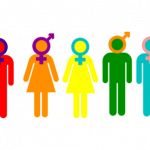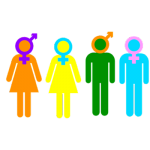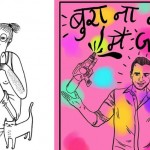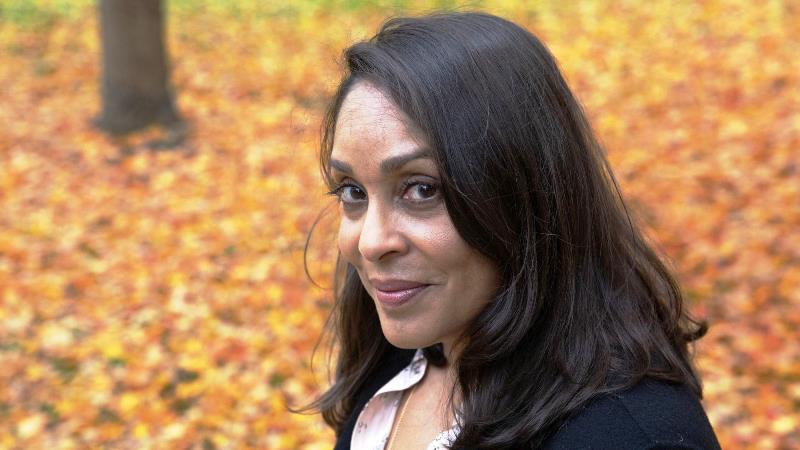“I was a normal child, but it’s the world that made me feel different.”
-Laxmi Narayan Tripathi
Love is accepting. It accepts both the light and the darkness that build you; your shining halo, and the several layers of hell that churn within you. Love doesn’t judge. It understands that you’re imperfect; that imperfection is universal; and that it’s the brightest form of beauty there ever was. Love doesn’t divide. It doesn’t care about your skin color, your language, which national anthem you were taught, and least of all, your sex. You could be man, woman, neither, or both, and Love would still preach the same: ‘I am home, for everybody’.
Suggested read: #PrideMonth A Short History Of The LGBTQ+ Community
The third gender has been ostracized across continents. We have great trouble accepting what we are not a part of. Not only have we not taken the pains of understanding the orientations that fall under this umbrella category, but we have taken a step further, and berated them at every little chance that we’ve received. Come to think of it, GenY prides itself on its ability to philosophize on Kafka and Rumi, but lacks the basic instinct of treating human beings as, well, human beings.
What is the “third gender”?
It is an umbrella category which includes individuals who identify as neither man nor woman. This ‘ambiguity in identity’ is either decided by the individuals themselves, or by the society. Different localities or countries define the “third gender” differently. Some include the LGBT community in the option, while others (like India) do not.
How countries deal with this
Australia: (January, 2003) The third option of ‘X’ as gender was introduced.
Germany: (November 2013) It’s perhaps the first European country to issue birth certificates with “indeterminate sex”.
India: (April 2014) The Supreme Court declared the transgender to be the ‘third gender’ in India. Tamil Nadu was the first state to recognize the ‘T’ option in its ration cards. They’re called “hijra”s here, and are believed to posses divine powers.
Nepal: (December, 2007) Nepal included ‘others’ alongside their ‘male’ and ‘female’ options. The 2011 Nepalese consensus, was the first national consensus in the world that allowed people to register under the third gender.
Pakistan: (December, 2009) They were issued national ID cards, with their distinct gender. They’re called ‘khwaja sara’.
Thailand: (2004) Chiang Mai Technology School made separate washrooms for the third gender, putting a ‘male’ and ‘female’ intertwined sign on the door. They are called ‘kathoeys’ here.
Suggested read: #PrideMonth LGBTQ Art Compilation: A Discourse On Right To Pride
Sexuality & gender education
Most of us do not have the correct understanding of sexualities or genders beyond the basic two. Often, this lack of knowledge leads us to draw wrong inferences. Unless you understand something, you cannot even begin to sympathize. There happens to be an endless list of categories we can enlist under the umbrella of ‘the third gender’; definitions varying from culture to culture. Here’s an attempt at decoding the basics of the third gender for you:
Transgender: A person who does not conform to the gender identity they had ascribed at birth.
Eunuch/Hijra: These are men who had been castrated at birth, leading to hormonal changes in their later lives. In some ancient texts, “eunuch”s also refer to a man who is celibate, impotent, or otherwise not inclined to marry and produce offspring. Not every transgender individual is a eunuch.
Transsexual: One who has surgically changed their physical attributes to be in keeping with the gender that they identify with. This is specifically an anatomic categorization.
Transvestite: Also called a ‘cross-dresser’. This person attains satisfaction by donning the clothes of the opposite gender.
Intersex: One who is born with the reproductive or sexual anatomy that fails to fit the stereotypical definition of man or woman. It may be apparent at birth, or develop later in life.
Tread on holy grounds
We have a hot and cold relationship with our deities. Irrespective of which God you worship, they both inspire and scare you. We keep drawing references and inferences from our mythology, yet we have always been selectively blind. We perceive only that portion which we’re comfortable with. In a world that swears by the name of God, we ostracize the gender that is an integral part of the “culture” we boast of.
- Hermaphroditus (Greek): He was a very handsome man, being raised by nymphs. Myth holds that one day he got undressed and jumped into the lake. Salmacis, a nymph who had fallen in love with him, was heartbroken by the absence of reciprocity. She prayed hard for them to be joined together eternally. She probably meant in matrimony, but Nature took it way too seriously. Henceforth, any man who’d bathe in that lake would become effeminate. This is where the term ‘hermaphrodite’ comes from: a fusion of the male and female organs.
- Hapi (Egyptian): He was the god of the River Nile. Despite being a man, he was related to fertility and nourishment. He had the physical attributes of both sexes: big breasts, a fake beard, a large belly, and aquatic plants on his head.
- Ardhanarishvara(Indian: Hindu): It literally translates to “the lord who was half woman”. He is the fusion of Shiva and Parvati, thereby representing how the male and female energies of the universe cannot separate.
Clearing misconceptions
- They are not untouchables: Touching them will not magically transform you into a hermaphrodite; much like studying brain diagrams didn’t affect your IQ. Granted, Nature works in mysterious ways, but this isn’t your everyday X-Men episode. Treat them as they deserve to be, as just another human being.
- They aren’t always after your wallet: This is kind of specific to India, where a part of the transgender community begs for money at train stations, parks, traffic signals, etc, due to the absence of employment opportunities. However, most people don’t know how considerate they generally are. Sometimes, they’re just looking for somebody to speak to; somebody who won’t shoot them down with a stay-away-from-me-you-godforsaken-beast stare.
- They did not choose this: Nobody chooses to be miserable.
Love has no gender
Love isn’t caged in a single gender or a single type, just like human beings. It doesn’t have to be romance for it to be love. To all the cards that begin with “For Him/Her”, THIS, is for “them”:
‘Humans of Amdavad’ is a page on Facebook which hosted a post that shook many up. The subject has been kept anonymous, so we’ll call him Anna, instead. Anna was born in an orthodox family, where child marriage was prevalent. His matrimony had already been confirmed even before the meaning of the word was clear to him. While growing up, he realized that his body was not showing the signs of development, unlike all the other boys around him. On consulting a doctor, he learnt that he was a part of the third gender. He couldn’t reveal this newfound truth, married the woman, and lived in guilt for several years. When he finally revealed to his family and wife, that he was in fact ‘she’, he lost everything. Cut to quite some time later, accustomed to the hard life of a ‘hijra’, having garnered a good financial stronghold, his ex-wife ends up at his doorstep with her son. The new husband is a violent alcoholic. Anna shelters them, helps her file for the divorce, buys them a new flat, gives her a 20k monthly allowance, and pays for a first-class education for her son. The son has now graduated from his MBA course, married the love of his life, and the three live happily, outside the state. Anna maintains that he couldn’t be a good son, or a good husband, as society’s delusions dictate, but he surely turned out to be one of the best fathers. What is love, if not selfless? Anna, I believe, has taught the readers more than any guides (How To Love 101) ever can.
‘The Logical Indian’ uploaded an account by Hemanth Poornachandra. He was sleeping on the berth of a local train, when a group of ‘hijra’s walked into their apartment asking for money. Amidst jokes and teasing, the protagonist struck up a conversation with the lady. He asked her why she must beg for money, learnt about the business dimensions of their trade (who heads which area, how they divide the money, etc.), and suggested that she initiate a joint venture with her friends (perhaps a tea stall?). He told her he’d bring all his friends to her stall for the best tea ever. They exchanged numbers and said their goodbyes. Several days after the trip, she called him to thank him for the suggestion and informed him that she had been saving aside money to invest in the venture. He reminded her that he stands firm on the promise of bringing all his friends to her stall. He signed off saying: “And now, I am waiting for that call which says, ‘Remember me, bro? It’s time you bring your friends!’”
Suggested read: #PrideMonth: Here Are The LGBTQ+ Rights Activists You Should Know About
It doesn’t take much to be nice. We have been socially conditioned to ridicule what we cannot comprehend; or that which is the minority. This isn’t charity, or a request, or a message of enlightenment. This is a wake-up call for all the people who’ve forgotten what it takes to be a human being: kindness.
“They laugh at me because I’m different; I laugh at them because they’re all the same.”
― Kurt Cobain
While the world wages war against what’s different, let’s be human enough to stand by the unique.
Featured image source: Google, copyright-free image under Creative Commons License













